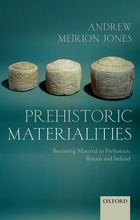Ice Age Art and the Folkton Drums
 During the Easter break I had the chance to visit the ‘Ice Age Art’ exhibition at the British Museum for the second time. I was there on the opening night, and will take a group of Masters students later this month; I can’t keep away! The objects in this exhibition have really captivated me to the extent that I’ve written a paper on the artefacts from the exhibition, to be published in a book on art and archaeology edited by Andrew Cochrane and Ian Russell; the artefacts offer us an intriguing perspective on the Upper Palaeolithic, c.40-10, 000 BC, not typically covered by the text books on Cave art. Although I was familiar with some objects, such as the Lowenmensch or Lion-man from Hohlenstein, others were unfamiliar. One of the things that struck me was the miniature size of so many of the objects carved from mammoth ivory. I’ve been working on aspects of miniaturisation for the last couple of years and had not realised that there were good examples of this from this period.
During the Easter break I had the chance to visit the ‘Ice Age Art’ exhibition at the British Museum for the second time. I was there on the opening night, and will take a group of Masters students later this month; I can’t keep away! The objects in this exhibition have really captivated me to the extent that I’ve written a paper on the artefacts from the exhibition, to be published in a book on art and archaeology edited by Andrew Cochrane and Ian Russell; the artefacts offer us an intriguing perspective on the Upper Palaeolithic, c.40-10, 000 BC, not typically covered by the text books on Cave art. Although I was familiar with some objects, such as the Lowenmensch or Lion-man from Hohlenstein, others were unfamiliar. One of the things that struck me was the miniature size of so many of the objects carved from mammoth ivory. I’ve been working on aspects of miniaturisation for the last couple of years and had not realised that there were good examples of this from this period.
While I was at the British Museum I had the chance to visit some old friends, the Folkton Drums, three carved chalk cylinders from the Neolithic (c.4000-2300 BC) of Yorkshire. The Folkton Drums are on display in gallery 51, (Prehistoric Europe) in the British Museum. They were excavated over a hundred years ago, they are unique and we really know very little about them; something I am hoping to remedy in the future. I had written about these intriguing objects in my last book ‘Prehistoric Materialities’ so it was good to see them again.
 I was lucky to be able to join one of the occasional museum talks given by curator Andrew Cochrane in the European prehistory gallery. It was great to be able to talk to members of the public about my ideas about these intriguing artefacts, with the artefacts sitting in front of me; a rare opportunity – I’m usually relying on slides when giving talks. People became really excited about these artefacts as we both explained their significance; are the representations of people? Why were they buried with a child? Why are there three of them? Were they made by the same person? Why are they unique? Some prehistoric artefacts captivate archaeologists. These artefacts have certainly obsessed Andrew Cochrane and myself. They are well worth taking a look at next time you visit the British Museum.
I was lucky to be able to join one of the occasional museum talks given by curator Andrew Cochrane in the European prehistory gallery. It was great to be able to talk to members of the public about my ideas about these intriguing artefacts, with the artefacts sitting in front of me; a rare opportunity – I’m usually relying on slides when giving talks. People became really excited about these artefacts as we both explained their significance; are the representations of people? Why were they buried with a child? Why are there three of them? Were they made by the same person? Why are they unique? Some prehistoric artefacts captivate archaeologists. These artefacts have certainly obsessed Andrew Cochrane and myself. They are well worth taking a look at next time you visit the British Museum.
You can read more on my personal blog.
